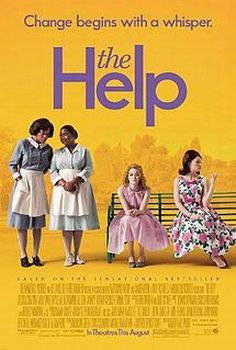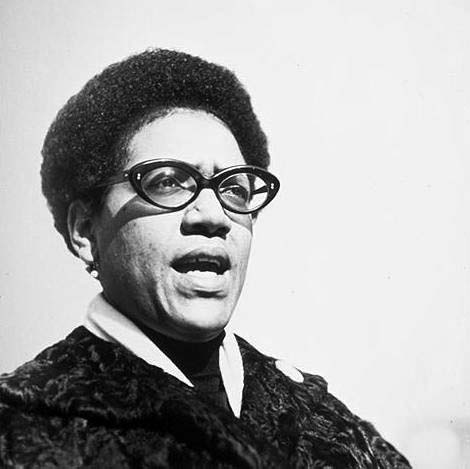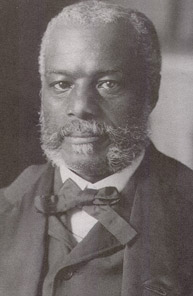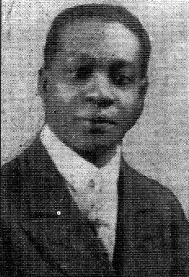
In the essay below, Associate Professor Trysh Travis of the University of Florida’s Center for Women’s Studies and Gender Research Center explores some of the controversy surrounding Kathryn Stockett’s novel The Help, which has also become a major film of the same name. She argues that many people will view both the book and the film as not realistic. While BlackPast.org readers will certainly debate that point, her article does allow an opportunity to explore a much larger question: can any white author sensitively explore the deeply complex relationships between white women employers and their domestic servants.
Guess what? Kathryn Stockett’s The Help, a multi-million copy bestseller and the basis for an Oscar-nominated film, is not very realistic. It traffics in stereotypes and fails to present the complexity of race relations. It downplays both the institutionalized violence (including sexual violence) of southern culture and the Civil Rights movement’s collective resistance to that violence, centering instead on a white heroine and celebrating her limited rebellion against entrenched racism as if it was another Harper’s Ferry. By focusing on the heroic white individual and her personal response to racism, the novel fails to realistically represent the world it narrates. Worse, it leaves intact the political, economic, and social structures that it pretends to critique.
As the Hollywood hype-machine began cranking for the film version of The Help last August, this critique was advanced by the Association of Black Women Historians (AWBH) and other progressive groups; it has now been revived for red carpet season. It’s a powerful argument, but with a key weakness: it ignores the ways that literature’s form (longstanding conventions about what certain types of fiction do and don’t attempt to do) constrains its content. Much of the criticism of The Help seems to suggest that if it contained more or different characters, plot elements, and details of place and voice it would be more “realistic” and therefore “better.” At the margins, this might be true; better research and more attention to nuance could have improved the novel. But ironically, the more historically accurate the novel became, the less likely it would be to seem “realistic” to its target audience: white women like the protagonist and author.
This may sound like I’m saying “since white women live in a racist fantasy world, they should read and write racist fantasies,” but it’s a little more complicated than that. What’s at stake in the argument over The Help is the nature of the “realism” the popular novel form offers its ideal audience. The real question is not “is Stockett’s book ‘realistic?’” but “Could any white-authored popular novel about white women’s relationships with black domestic workers seem ‘realistic’ to both a mass market white audience and race conscious progressives?”
The popular novel (a “good read” focused on a three-dimensional character “you can relate to”) developed during the 19th century alongside the new middle classes. Fanciful prose narratives had existed before, but the novel was different: it focused on depicting interior (personal) rather than exterior (social) states of being. This emphasis reflected the fact that, as a way of marking their difference from the aristocracy, members of the middle classes came to believe that a person’s interior self was more authentic, more “real,” than their public self, which was routinely performed and manipulated for social gain. Novels about this interior self did strive to accurately depict the world in which characters lived. But their interest in doing so was strategic: they showed the outside world in detail so that characters’ interior lives, the transformations of which drove the narrative and held the readers’ attention, would seem believable.
Today, the front tables of every Barnes and Noble bear witness to what critics call the “triumph” of the novel: fiction centered on characters’ interior lives dominates contemporary literature. But it has always had critics. Nineteenth-century clergy, for example, hated novels. Because readers found it easier and more fun to identify with fictional characters than with Jesus, novel reading threatened the church. Progressive reformers and revolutionaries have long had a similar complaint, arguing that character-driven novels obscure the ways that forces like class, gender, and race structure the world. Far from representing “reality,” they actually falsify the centrality and power of the individual. This focus on private personhood not only fails to challenge the social structures that truly organize our worlds, but also perpetuates them.
This brief literary history helps explain The Help’s popularity. The average white woman reader in the US (and average white women readers have been determining bestsellers for centuries now) finds Stockett’s novel “realistic” not only because it is the story of someone like her, but also because it is the story of an individual struggling to become a better person. Raising awareness, gaining independence, befriending “others” (and being cast out by the dominant group as a result): The Help applauds all these things. In doing so it validates its ideal readers’ convictions that the growing, changing interior self is the essence of what we are. It’s the very thing, it’s the only thing, that can lift us above a corrupt social world. If you believe that self is “real,” it’s hard to also see structural inequality as “real.”
So with this in mind, let me restate my earlier question. We have a novel about an elite white woman trying to befriend black domestic workers that is written by, for, and about a specific social location and invested in that location’s idea of “realism.” Can that novel also seem “realistic” to people who inhabit a radically different social location? Or to put it more practically, are there any novels out there on this topic that both mainstream white readers of popular fiction and the ABWH and its supporters can find “realistic”?
As the quarrel over The Help intensified last summer, I polled race-conscious women (feminist listserv members and Women’s Studies colleagues) on this question. Most ignored the specifics of my request, and recommended history books instead of fiction, some about black-white relations in the plantation south (Elizabeth Fox-Genovese’s Within the Plantation Household [1988] and Thavolia Glymph’s Out of the House of Bondage [2008]), and some about 20th-century black domestic workers (Jacqueline Jones’s Labor of Love, Labor of Sorrow [1986] and Rebecca Sharpless’s Cooking in Other Women’s Kitchens [2010]). Particularly interesting was the oral history Telling Memories among Southern Women: Domestic Workers and Their Employers in the Segregated South (ed. Susan Tucker, 2002). Though no one said so explicitly, these recommendations suggested that only historical documents could accurately capture the relationship between white women and “the help.”
Of the few novels recommended to me, most were by black authors. Ann Petry’s classic The Street (1946), was mentioned often, along with Alice Childress’s long overlooked Like One of the Family (1956) and Barbara Neeley’s Blanche on the Lam (1993). These titles were indeed fictional depictions of white employers and black domestics, but they did not speak to my interest in stories about privileged white women trying to bridge the racial divide. Instead, they kept white characters at the margins, satirizing their foibles and showcasing the heroines’ resistance to their sometimes careless, other times vicious racism. They turned the tables on The Help, but few white readers would call them “realistic.”
Ultimately, my survey yielded precisely two white-authored novels about white women’s relationships with black domestics that were deemed to be truly thoughtful about race: Ellen Douglas’s 1988 Can’t Quit You, Baby and Minrose Gwin’s The Queen of Palmyra (2010). The latter reads like an Oprah Book: scrappy heroine, rich local color, and lots of family dysfunction. In the summer of 1963, eleven year old Florence Forrest finds herself an outcast in her Mississippi town because her genteel mother is an alcoholic who married a “trashy” white man. Really, seriously trashy: he rides with the Klan and sexually abuses his daughter. Florence finds some respite from the turmoil at home with the family of her grandparents’ black maid Zenie, which includes the charismatic Eva, a Tougaloo College student who is raped and later murdered by Florence’s father when he learns she is an organizer in the black community. “The help” certainly treat Florence better than her own family does, but there are no mammies here. The black characters see Florence as somewhat pathetic, and their relationship is animated by their awareness that her inappropriate dependence on them jeopardizes their whole community.
Can’t Quit You, Baby has a simpler plot, but a more elaborate form: it shifts across time and among the points of view of WASP-y Cornelia, her black housekeeper Tweet, and a narrator who describes the difficulties of telling their story, which spans fifty years. Cornelia’s and Tweet’s narratives depict their friendly and supportive relationship, but never explore its nuances. The narrator has to point out to the reader the tensions and omissions, as well as the confidences, that underpin it. When Tweet has a stroke and Cornelia becomes one of her caregivers, however, the role reversal forces the dynamics of race and class to the surface: the two women end up shouting their hatred of each other. But like “friendship,” “hatred” oversimplifies their bond. The novel concludes with Tweet singing a snatch of the Willie Dixon blues that gives the novel its title: “I love you baby, but I sure do hate your ways.” Her white employer/oppressor/friend affirms the sentiment by responding “Sing it, Tweet. Sing it.”
“I love you baby, but I sure do hate your ways” is a more complex sentiment than a book like The Help can handle. Stockett’s novel goes as far as “I love you” and stops, asking us to believe not only that love is possible across the color line, but that it will dissolve it. Such a belief grounds the popular novel’s “realism.” By contrast, “I love you, but I hate your ways” contains no promise of personal transformation, and certainly no suggestion that personal transformation can lead to social change. That ambivalence is also “realism” but of a different order. Reasonable people may differ over which realism is most…realistic. But they should not be surprised if only one kind appears on the bestseller list.



















